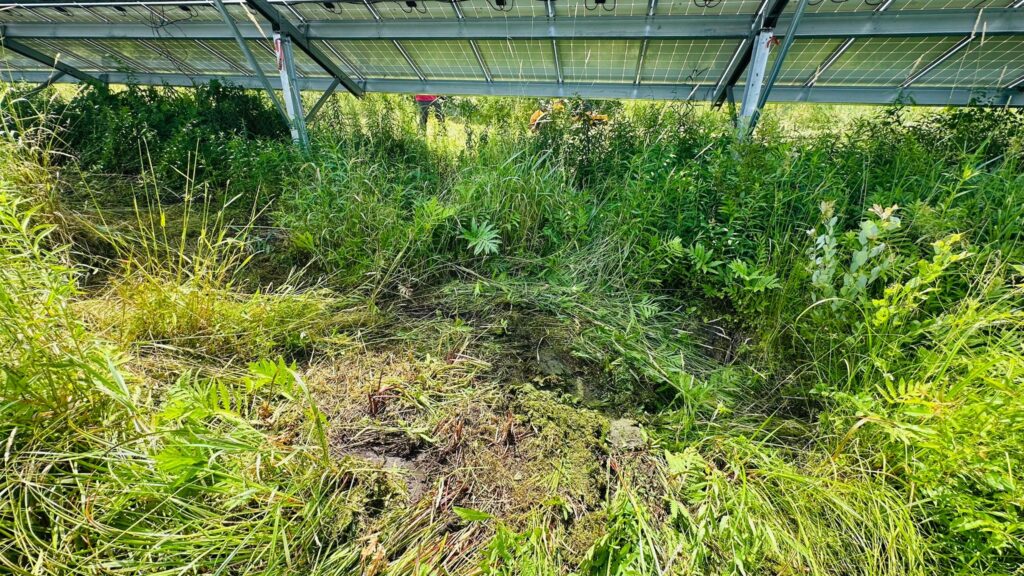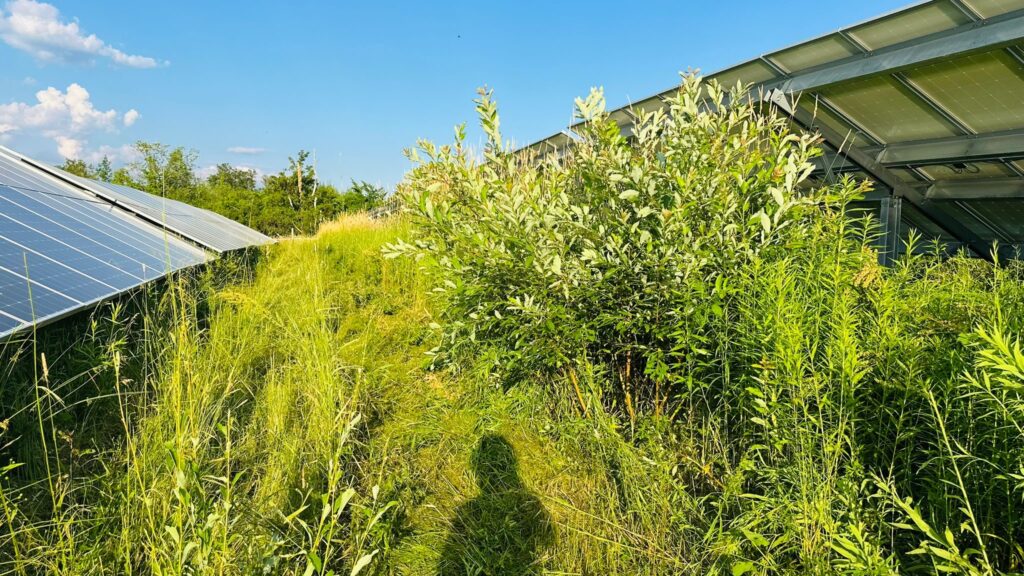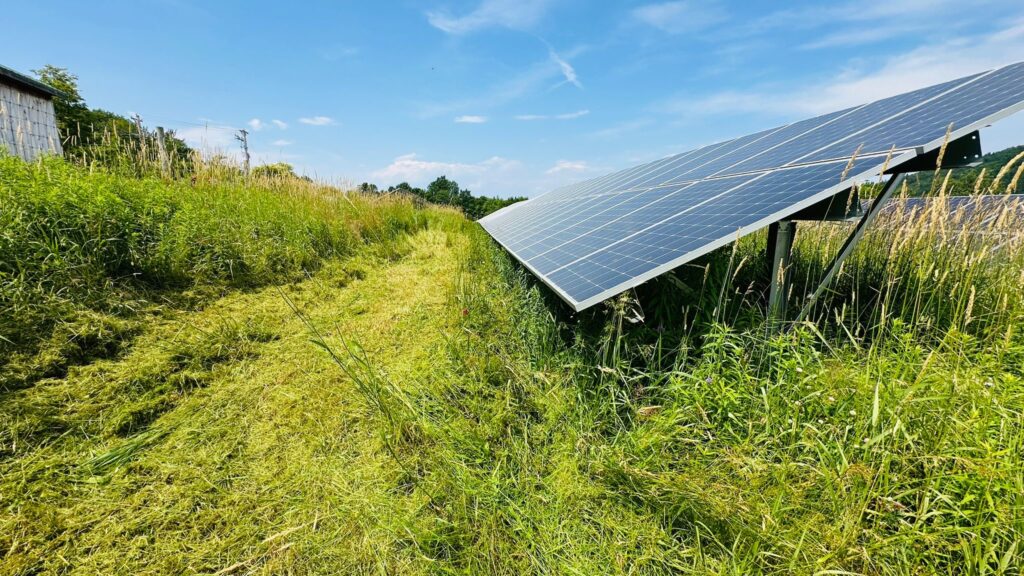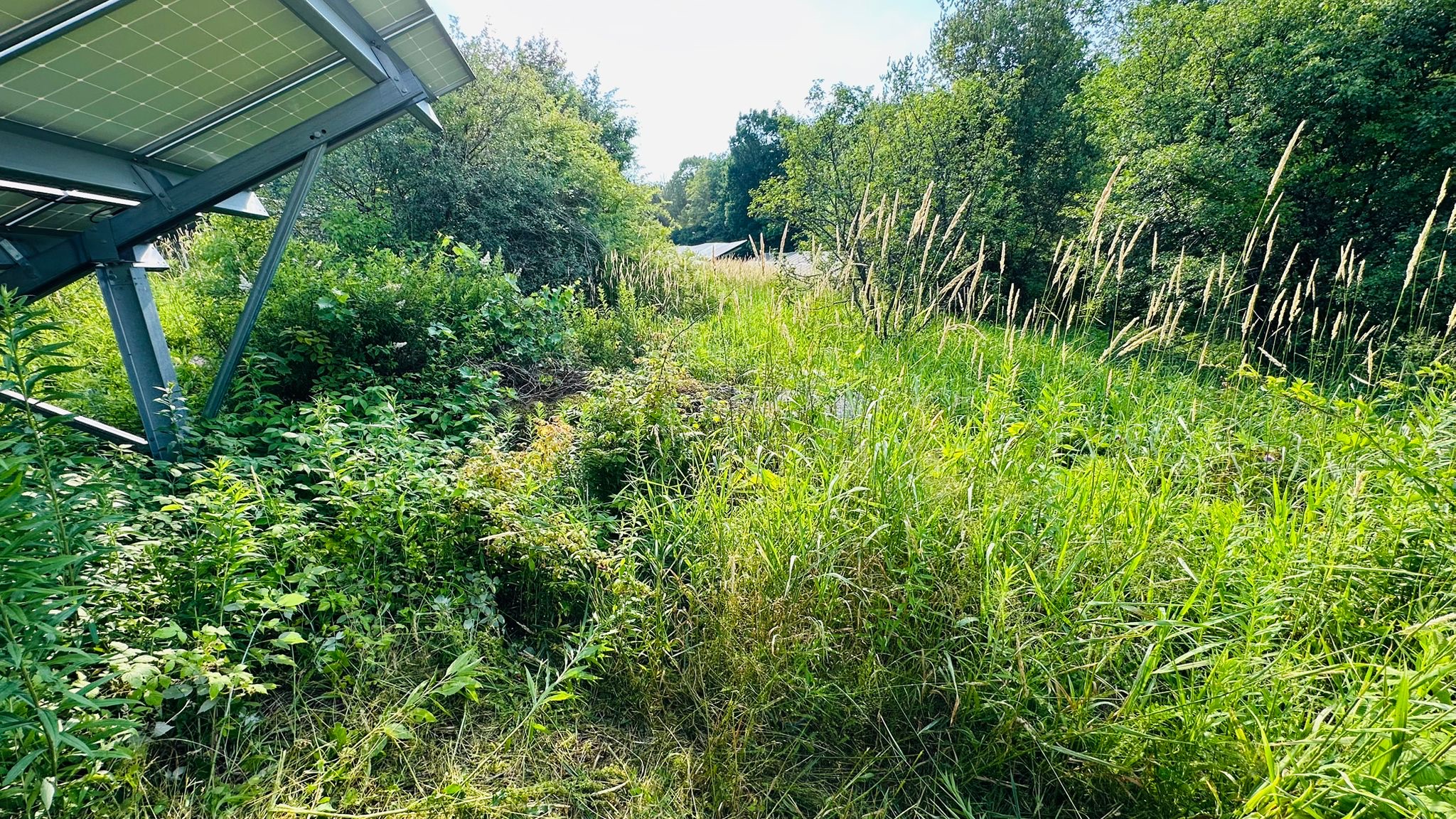You’ve invested in solar power for its promise of clean energy, long-term savings, and environmental impact for New England. But what if your solar system is losing efficiency—not from faulty equipment, but from a far more preventable problem?
Overgrown vegetation is the silent threat that too many solar owners overlook. What seems like harmless growth can actually lead to major energy loss, fire hazards, and expensive repairs. Whether you’re managing a residential setup or a utility-scale solar farm, professional vegetation management isn’t optional—it’s essential.
In this post, we’ll uncover the hidden costs of neglected vegetation and show how Peak Solar Pro helps protect your solar investment through expert vegetation control across New England.

Unmasking the Main Culprit: Energy Loss Due to Shading
You may not realize it, but a single bush or tree casting shade on even part of your panel array can disrupt the system’s entire output. This is known as the “Christmas light effect,” where one shaded panel reduces the performance of the entire string it’s connected to.
Shade doesn’t just lower energy output—it causes hot spots, where uneven energy flow creates heat that can damage panel cells over time. Even partial shade from grass, leaves, or undergrowth can reduce your energy production by 15–30% or more depending on system design.
At Peak Solar Pro, we prevent energy loss by proactively trimming and clearing vegetation to maximize sun exposure. Our team uses site-specific data and smart scheduling to ensure your array remains unobstructed all summer long.
Beyond Shading: Physical Damage to Your Solar Infrastructure
While shading may be the most obvious concern, physical damage from vegetation is a growing issue for solar systems.
Falling branches, thorny shrubs, and even wind-blown debris can scratch your panels, leading to micro-cracks and reduced efficiency. Moisture-trapping leaf piles can promote corrosion, and large root systems can destabilize your racking and foundation.
But the threats don’t stop there—dense vegetation provides cover for rodents and pests, who often chew on exposed wiring. This can cause outages, arcing, or costly replacements, not to mention the fire risks associated with exposed conductors.
With Peak Solar Pro, you get more than a landscaping team—you get specialists trained to protect the structural and electrical health of your solar system. We clear problem areas before they cause long-term damage.

The Hidden Danger: Increased Fire Risk
Dry summers across New England—especially in places like Cape Cod, Hartford, and Montpelier—can quickly turn overgrown weeds and brush into tinderboxes.
Electrical systems, even well-maintained ones, generate heat. A stray spark or fault, when combined with dry vegetation, can ignite a fire that not only destroys your solar array but spreads to nearby buildings or wildlands.
At Peak Solar Pro, our crews are trained in fire prevention best practices. We strategically clear flammable material, manage safe buffer zones around equipment, and help you meet local and NEC fire safety codes for solar installations.
Compromised Accessibility and Increased Maintenance Costs
Overgrown vegetation doesn’t just threaten performance—it slows down every aspect of maintenance. Technicians need safe, direct access to your panels to clean, inspect, and repair. Tall weeds and brush hide trip hazards, encourage insect nests, and make it harder to navigate safely—especially on larger farms or uneven terrain.
The more time spent clearing the area just to begin a service call, the higher your maintenance costs. Delays also mean longer system downtime and missed energy savings.
Our vegetation management plans at Peak Solar Pro ensure your site remains accessible and safe year-round. We don’t just react to problems—we prevent them from occurring in the first place.
Protect Your Investment: The Peak Solar Pro Difference in Vegetation Management
Neglecting vegetation is a reactive approach. At Peak Solar Pro, we believe in preventive care. Our vegetation services are designed to anticipate seasonal growth, climate shifts, and local site conditions so your panels stay productive.
Here’s what sets us apart:
- Trained solar specialists, not just landscapers
- Solar-safe equipment that won’t damage mounts or panels
- Custom service plans for farms, homes, or commercial sites
- Full compliance with NEC codes and local fire safety regulations
By investing in proactive vegetation management, you’re saving on long-term maintenance, boosting daily output, and extending the life of your solar array.

Don’t Let Your Solar System Lose Its Edge
Shading. Damage. Fire risk. Delayed repairs. These are the real costs of unmanaged vegetation—and they all add up fast.
Whether you’re in Boston, Providence, Concord, or anywhere across New England, Peak Solar Pro is your trusted partner in keeping solar sites safe, efficient, and profitable.
📞 Call us today at (617) 522-4046
📍 Proudly serving MA, CT, NH, VT, RI & ME
🗓️ Book your vegetation management assessment online now
Take action today to ensure your solar investment performs at its best—summer and beyond.
Frequently Asked Questions About Solar Vegetation Management
Q: How often should vegetation be managed around solar panels? A: The frequency depends on your local climate, the types of plants growing, and the specific design of your solar array. Generally, most sites need management at least 2-4 times a year, with closer monitoring during peak growing seasons.
Q: Can I manage the vegetation myself? A: While you can trim small areas, large solar arrays or sites with complex vegetation often require professional help. Professionals have specialized equipment and knowledge to safely and effectively manage growth without damaging your panels or risking injury.
Q: Does vegetation management affect my solar panel warranty? A: Neglecting vegetation that causes damage (like severe shading or physical impact from roots/branches) could potentially impact your warranty. Professional management helps prevent issues that might lead to warranty claims.
Q: What if I have a large solar farm? Are the methods different? A: Yes, large solar farms often benefit from more advanced techniques like solar grazing (using livestock), targeted herbicide application, and sophisticated mechanical clearing. These methods are chosen for efficiency, cost-effectiveness, and environmental impact on a larger scale.
Q: Is vegetation management environmentally friendly? A: Yes, it can be. Many modern vegetation management strategies, like solar grazing or selecting low-impact ground covers, aim to be environmentally responsible, promoting biodiversity and reducing reliance on chemicals or fossil fuels.
